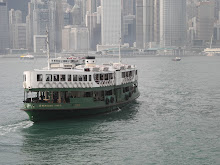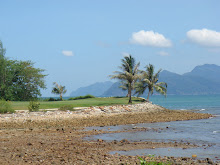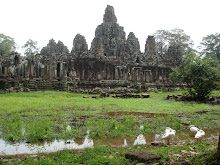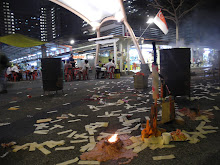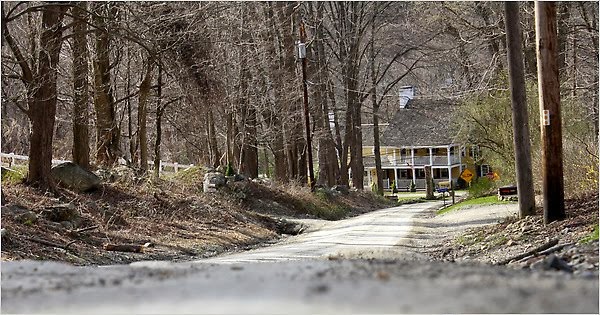
Recently I visited the Singapore General Hospital and took part in socialized medicine. In 2007, I had a melanoma removed by a doctor in NYC. I noticed another mole changing its spot, so a doctor check up was in order.
Medicine in Singapore is modeled on the British system. Singapore General Hospital is 100% government-owned and not-for-profit institution. It is a vast complex of buildings for specific treatments, such as emergency, children, heart, and the like. It is the location of a postgraduate medical college and a medical museum. The Ministry of Health’s headquarters are also part of SGH. My introduction to Singapore’s healthcare system begins here with an appointment in the cancer block.
Each treatment center building, or block, has several clinics. Each clinic has individual examination rooms for each doctor and one general waiting room. My appointment was with a cancer consultant. By the looks of the crowded waiting room, I guessed my wait would be long, even though I made an appointment. I soon realized that the crowd represented the efficiently of the clinic, not the incompetency.
When I walked into the clinic’s waiting room an attendant called welcome and asked me to place my appointment confirmation number and I.D. in a wire basket on the check in desk. I walked the room looking for a good seat and noticed the typical waiting room setup: TV blasting bad daytime programs, magazines on all subjects tossed about the place and, of course, a couple of people bobbing to the tunes from their iPods. Before I could take a seat the attendant called me by name back to the check in desk where I answered general questions about my nationality and my stay in Singapore. She weighed and measured me, assigned me a patient number and instructed me to take a seat.
When I settled in my seat I noticed a huge “Now Serving” electric board on the wall. The giant lighted board in the waiting room listed 10 set room numbers. Next to each room number was a space for the patient number. I just had to wait until my patient number flashed to know the corresponding room number of my doctor. After a short while, my mobile phone vibrated with a text message. Just when I thought the wait couldn’t get more straightforward, I read the text letting me know that 3 patients were in front of me in the queue. So, I decided I had a bit of time to look for a cup of coffee or a vending machine. The attendant gave me directions to the cafeteria.
Knowing that I had some “free time” took the edge off the wait and eased my nervousness. I suddenly felt lucky to be exploring SGH and their medical system. The thrill of the experience tipped the scales after walking from building to building under a covered sidewalk and into the hospital’s cafeteria. This being Singapore the cafeteria was actually a hawker center! Stalls of different cuisine: Japanese, Chinese, Korean, and Malaysian. One stall for drinks, another for desserts and a separate stand for fruit juices. What really blew my mind were the TV screens bolted from the ceiling like TV screens at an OTB branch. Rather than posting racing results, these screens were posting every clinic, room number, and patient number! Doctors, nurses, interns were merrily dining next to patients and visitors as if it were the
Newton Food Center on a Saturday night. Once I bought my coffee I retraced my steps back to the clinic and patiently waited under the tote board for my patient number to appear.
I returned to SGH three times after that initial visit. Each followed the same routine of receiving a patient number, a text, and then a doctor. After the appointments, I returned to the check in desk to pay the bill. It was all surprisingly affordable, especially because the doctors were considered specialists. The drugs eventually prescribed cost only S$6. Because I also have my insurance from the US, I was required to fill out a 2-page form online and submit it with my receipts for total reimbursement.
When I first made an appointment to have a mole removed in 2007, I had to wait three weeks just to meet with a doctor and another 10 days to have the mole removed. For each appointment at SGH, I had to wait only 24 hours. I don’t remember how long my wait was in the US waiting room, but I know it didn’t compare with the ease of my wait at SGH. I had enough to worry about, but knowing that each doctor’s visit would be orderly, hospitable, and affordable reduced my anxiety.
 The holiday season centers on pleasing the eye and touching the heart. It’s about continuing with tradition, keeping in touch with family and friends, and preventing mosquitoes from breeding. In Singapore, dengue fever is always in season! Most live Christmas trees sold come with a powder to mix in the treestand water to keep mosquitoes from breeding. Posted signs in garden centers where trees are sold warn: If They Breed You Will Bleed. Ho! Ho! Hum...
The holiday season centers on pleasing the eye and touching the heart. It’s about continuing with tradition, keeping in touch with family and friends, and preventing mosquitoes from breeding. In Singapore, dengue fever is always in season! Most live Christmas trees sold come with a powder to mix in the treestand water to keep mosquitoes from breeding. Posted signs in garden centers where trees are sold warn: If They Breed You Will Bleed. Ho! Ho! Hum... opping drag. The sponsor adorns, garlands, and lights the sidewalks, trees and everything in between. The shopping malls and buildings along the stretch decorate and light their facades from top to bottom. As if it were not bright enough, there is the “Orchard Road Christmas Light-Up.” For one day only, on December 25th, a portion of the road closes and fills with even more brightly lit displays.
opping drag. The sponsor adorns, garlands, and lights the sidewalks, trees and everything in between. The shopping malls and buildings along the stretch decorate and light their facades from top to bottom. As if it were not bright enough, there is the “Orchard Road Christmas Light-Up.” For one day only, on December 25th, a portion of the road closes and fills with even more brightly lit displays. We woke on Christmas morning to a solid, steady rain. It lasted all day, but ended at dusk in time for us to “Light-Up.” The road was so bright that night the birds were chirping. Thousands of people were shuffling, pushing, spitting, and posing in the streets and on the sidewalks. Singapore’s Christmas mass.
We woke on Christmas morning to a solid, steady rain. It lasted all day, but ended at dusk in time for us to “Light-Up.” The road was so bright that night the birds were chirping. Thousands of people were shuffling, pushing, spitting, and posing in the streets and on the sidewalks. Singapore’s Christmas mass.

















 In 1909, the game bounced back! The celluloid ball was invented. John Jacques renamed his game Ping Pong after the sound of the ball as it hit the drum battledores (paddles). Ping Pong and Table Tennis games were both popular and, just like Federer and Nadal, they were rivals. Ping Pong and Table Tennis had separate rulebooks. Parker Brothers bought the American rights for the name Ping Pong and enforced all trademarks. Both sides knew all the back and forth between the game’s official name had to end. By 1926 Ping Pong and Table Tennis combined forces in order to bring the sport to the international table. Berlin established The International Table Tennis Federation. In 1977, Table Tennis became an official Olympic sport.
In 1909, the game bounced back! The celluloid ball was invented. John Jacques renamed his game Ping Pong after the sound of the ball as it hit the drum battledores (paddles). Ping Pong and Table Tennis games were both popular and, just like Federer and Nadal, they were rivals. Ping Pong and Table Tennis had separate rulebooks. Parker Brothers bought the American rights for the name Ping Pong and enforced all trademarks. Both sides knew all the back and forth between the game’s official name had to end. By 1926 Ping Pong and Table Tennis combined forces in order to bring the sport to the international table. Berlin established The International Table Tennis Federation. In 1977, Table Tennis became an official Olympic sport. 











 Off Orchard Road, a “lifestyle” residential tower is under construction. Developers, Hayden Properties, are creating the world’s largest apartment building with connected car porches. The Hamilton Scotts will have an elevator that lifts the car up to the unit. As part of the design, the parked cars next to each condominium form a column along the building. From the street people will be able to see a car column behind a panel of glass. The 54 units are roughly 2,700 sq ft each and cost over S$4,000 sq. ft. Move in date is 2011.
Off Orchard Road, a “lifestyle” residential tower is under construction. Developers, Hayden Properties, are creating the world’s largest apartment building with connected car porches. The Hamilton Scotts will have an elevator that lifts the car up to the unit. As part of the design, the parked cars next to each condominium form a column along the building. From the street people will be able to see a car column behind a panel of glass. The 54 units are roughly 2,700 sq ft each and cost over S$4,000 sq. ft. Move in date is 2011.  According to the Singapore Tourism Board, 2008 saw good returns. Even though Singapore welcomed only 10.1 million visitors, a small decline of 1.6% from 2007, it did post record-breaking receipts of S$14.8 billion (9.8 billion U.S.), an increase of 4.8%. Room revenue in hotels booked S$2.1 billion (1.4 billion U.S.), a 12.1% growth over last year.
According to the Singapore Tourism Board, 2008 saw good returns. Even though Singapore welcomed only 10.1 million visitors, a small decline of 1.6% from 2007, it did post record-breaking receipts of S$14.8 billion (9.8 billion U.S.), an increase of 4.8%. Room revenue in hotels booked S$2.1 billion (1.4 billion U.S.), a 12.1% growth over last year. 













